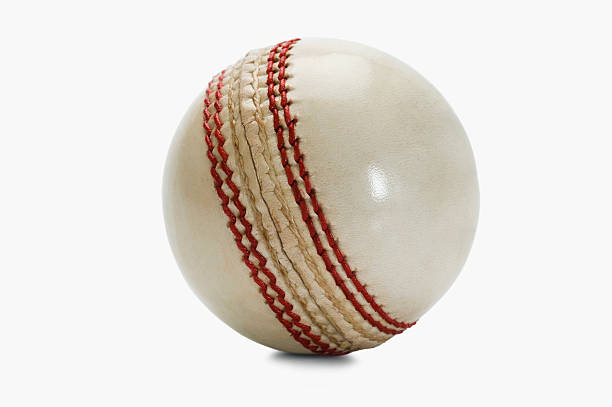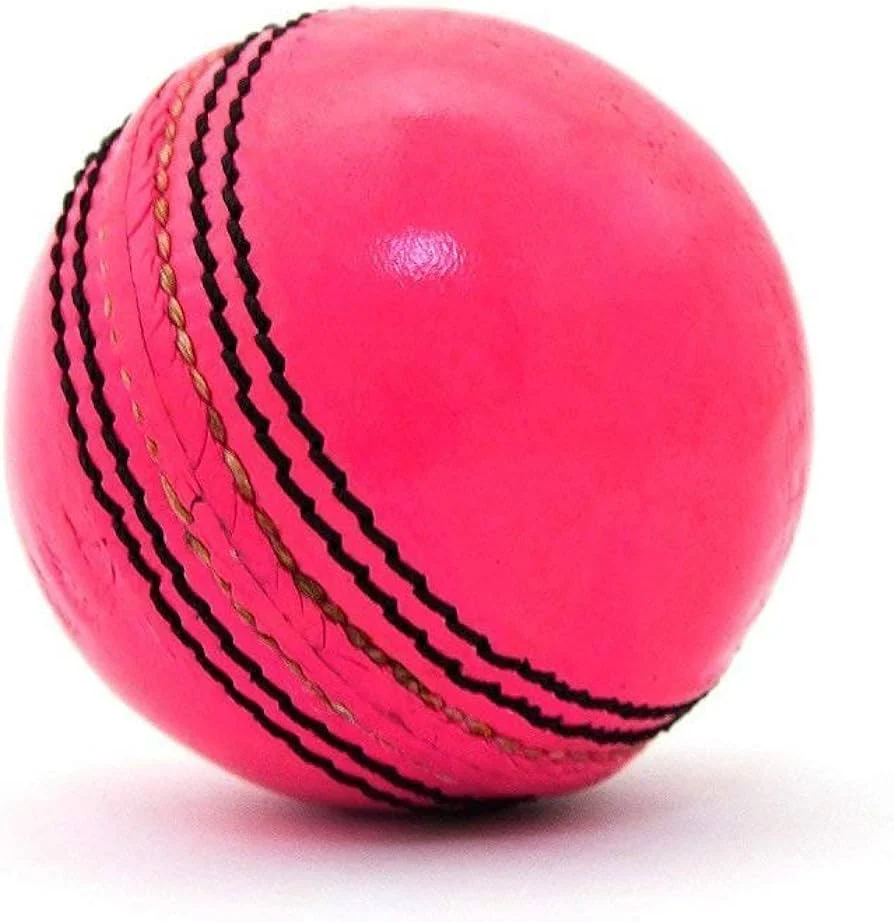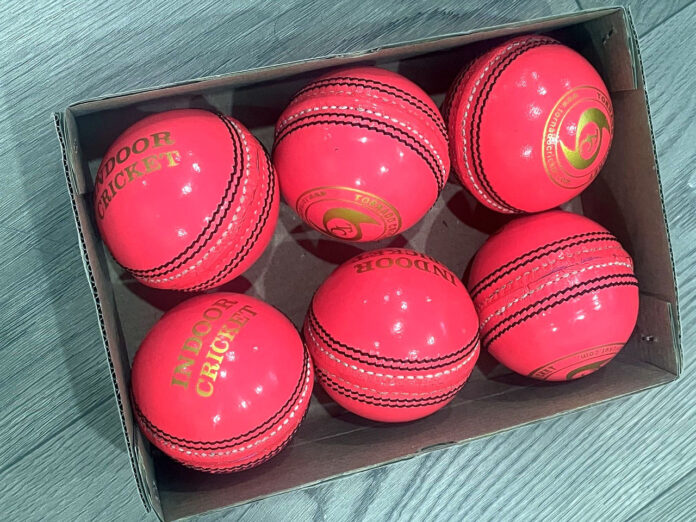Cricket is a traditional sport that adapts to accommodate new audiences and problems. Introducing white and pink cricket balls, each suited for certain purposes and match forms was a game-changing innovation. While red balls have traditionally dominated cricket, the introduction of white and pink balls has altered how the game is played, especially in changing lighting circumstances. So, what distinguishes these balls? Let us investigate the changes in design, behavior, and impact on the game. Also Uncover all the exciting details about the ICC Champions Trophy 2025, including schedules, participating teams, and more.
Cricket Balls: Their Evolution
The cricket ball has changed dramatically over time. Initially, red cricket balls were the standard, being used in all game styles. Their durability and visibility in daylight made them a Test cricket fixture.
However, the emergence of limited-overs forms such as ODIs and T20s necessitated the development of a ball that was more suited to artificial illumination and shorter game durations, resulting in the development of the white cricket ball. Later, as day-night Test matches became more popular, the pink ball was developed to overcome the issues of visibility at dusk and under floodlights.
White Cricket Ball: Characteristics and Usage Design and Construction
The white cricket ball is similar in size and weight to the classic red ball, but differs dramatically in color and surface polish. Its dazzling white hue comes from dyeing and a unique lacquer coating that improves visibility during night matches. The white ball’s seams are often black, creating a stark contrast against its surface that allows players and spectators to track its movement.

Purpose
The white cricket ball is only used in limited-overs cricket, such as One Day Internationals (ODIs) and Twenty20 Internationals (T20Is). It is preferred for these formats because it is very visible under floodlights, which are commonly used in evening matches.
Behavior
One of the white ball’s distinguishing features is its swing. Initially, the ball swings beautifully, but this effect fades faster than with the red ball due to less wear on its smooth surface. The white lacquer fades unevenly, making it difficult for bowlers to maintain reverse swing. Furthermore, white balls tend to lose their shine quicker, which affects their grip and movement.
Pink Cricket Ball: Characteristics and Applications Design and Construction
In terms of design, the pink cricket ball resembles both the red and white balls. Its pink dye is chosen to improve visibility during twilight hours and under floodlights in day-night test matches. To address the red ball’s low-light visibility concerns, the pink ball has extra layers of lacquer, giving it a sleek and glossy appearance. To contrast with its dazzling surface, the pink ball’s seams are usually black or dark green. These seams are crucial for bowlers’ swing and spin.

Purpose
The pink cricket ball was created specifically for day-night Test matches, in which natural light transitions to artificial lighting. Its brilliant color allows players and spectators to track the ball’s movement even in low-light settings.
Behavior
The pink ball behaves differently than the red and white balls. Because of its additional lacquer, it swings more than the red ball and frequently acts unexpectedly under lights, adding another layer of difficulty for batters. However, the added coating makes it significantly harder, resulting in faster wear on the bat and fielding equipment.
Key Differences Between White and Pink Balls
The white and pink cricket balls are tailored to specific match forms and lighting situations. While they have some architectural similarities, their main differences include color, behavior, longevity, and impact on the game. This is a full comparison:
1. Color & Visibility
White Balls:
The bright white color improves visibility under artificial lighting during ODIs and T20Is.
Can rapidly become dirty on grassy or dusty outfields, reducing vision over time.
Pink Balls:
Vivid pink increases visibility during day-night Test matches, particularly at dusk and under floodlights.
Due to additional layers of lacquer, it retains its brightness for a longer period than white balls.
2. Swing and Seam Movement: White Ball
Swings well in the first few overs, but loses swing quickly as the lacquer fades.
Seam visibility deteriorates over time, making it difficult for bowlers to extract movement.
Pink Balls:
The extra lacquer coating and sharper seam provide a more pronounced swing.
Maintains steady movement even under lighting, posing additional obstacles for batters.
3. Durability: White Ball.
Designed for shorter formats in which durability is less important.
The ball’s surface wears out faster, which affects its behavior.
Pink Balls:
Designed to withstand longer innings in day-night Tests, requiring more coatings of lacquer for protection.
More durable, preserving its shine and swing properties for longer periods.
4. The impact on bowlers:
The white ball provides restricted swing chances, necessitating greater accuracy and variation.
The pink ball has more swing, especially under lights, allowing bowlers to take advantage of the conditions more effectively.
For bats:
White balls are easy to monitor at first, but they might be difficult to discern if soiled.
Pink balls are difficult to read under lights due to their swing and speed, requiring greater concentration and expertise.
5. Match Format Suitability: White Ball
Only used in limited-overs cricket (ODI and T20Is).
Ideal for shorter forms with varying lighting circumstances during evening contests.
Pink Balls:
Designed specifically for day/night Test matches.
Long-term play in a variety of lighting settings is highly effective.
6. Outfield Impact: White Ball.
Color and sparkle fade quickly in grassy or muddy outfields.
To ensure visibility during matches, regular replenishment is required.
Pink Balls:
The added lacquer helps resist wear and filth, resulting in superior performance over time.
7. Audience and Viewer Experience.
White Balls:
During fast-paced limited-overs games, spectators can see more clearly.
Television broadcasts benefit from its strong visibility under lighting.
Pink Balls:
The improved visibility in day-night tests makes it suited for extended viewing sessions.
Provides an interesting spectacle, especially after dusk.
Color
- White ball: bright white.
- Pink Ball: Vivid pink. Formats
Formats
- White ball: Used for ODIs and T20Is.
- Pink Ball: Designed for day-night test matches.
Visibility
- White Ball: Highly apparent under artificial lighting.
- Pink Ball: Improved visibility at dusk and under floodlights.
Durability
- White ball wears down faster and loses its sheen rapidly.
- Pink Ball: Increased durability due to numerous layers of lacquer.
Swing
- White Ball: As the lacquer fades, the swing becomes less effective.
- Pink Ball: Improves swing, especially under lighting.
Seam
- White Ball: The seam becomes less noticeable with time.
- Pink Ball: A sharp and conspicuous seam for longer wear.
Outfield Impact
- White Ball: Gets soiled rapidly on grassy or dusty outfields.
- Pink Ball: Keeps its luster and color longer.
Bowling Impact
- White Ball: After the first overs, bowlers get little swing opportunities.
- Pink Ball: Bowlers profit from repeated swings and movements.
Batting Impact
- White ball is easier to track at first, but becomes more difficult as it gets dirty.
- Pink Ball: The pronounced swing makes it more difficult for batters to hit under lights.
Lacquer
- White Ball: A minimalist lacquer for short-duration media.
- Pink Ball: Additional lacquer for improved performance in long bouts.
Audience Appeal
- White ball is ideal for fast-paced limited-overs cricket.
- Pink Ball: Offers a visually appealing experience for day and night tests.
How are cricket balls made?
Cricket balls are precisely made to suit weight, size, and performance specifications. The manufacturing process is multi-step, blending traditional artistry with modern technology to create a ball that can survive the demands of competitive play. Here’s a step-by-step tutorial to how cricket balls are made:
1. Materials Used
Cricket balls are mostly made from the following materials:
- Cork: Forms the core of the ball, providing toughness and bounce.
- Woolen yarn is wrapped around the cork to provide weight and stability.
- Leather: Used for the outside cover to provide durability and smoothness.
- Lacquer is a lustrous coating applied to leather for protection and improved performance.
2. The Core
The process starts at the core.
- A little cork sphere, often obtained from the bark of cork oak trees, serves as the cricket ball’s basis.
- The cork is squeezed under tremendous pressure to create a robust, sturdy core capable of absorbing impact and providing constant bounce.
3. Wrapping with woolen yarn
The cork core is securely coiled with multiple layers of high-quality woolen yarn.
The yarn is twisted under tension to form a uniform shape and add weight and hardness to the ball.
This step is crucial for maintaining the ball’s balance and durability throughout play.
4. Leather cover
Cutting and Shaping
High-grade leather is cut into exact forms, usually two halves or four quarters, depending on the manufacturing procedure.
These leather pieces are dyed (red, white, or pink) and treated to get the appropriate color and quality.
Stitching
The leather pieces are sewn around the core with waxed thread.
Most professional-grade balls have 60-80 hand-sewn stitches to ensure the seam is prominent and durable.
The seam not only holds the ball together, but it also helps bowlers get swing and spin.
5. Laquering and Polishing
After stitching the leather cover, layers of lacquer are applied to the ball.
The lacquer increases the ball’s brilliance, improves visibility, and preserves the leather from wear and strain.
Pink balls have additional coats of lacquer added to ensure longevity under floodlights.
6. Shape and Testing
The ball is placed in a shaping press to get a precisely round form.
To comply with international standards, each ball is checked for weight, size, and hardness.
Men’s cricket weights range from 155.9 to 163 grams.
Circumference: 22.4–22.9 cm.
Balls that have passed these testing are polished and stamped with the manufacturer’s emblem.
7. Category
Cricket balls are classed according to their intended purpose.
- Red balls are mostly used in Test matches.
- White balls: Used in limited-overs cricket (ODIs and T20s).
- Pink balls are used for day/night Test matches.
Controversies and Challenges
Both white and pink cricket balls have received their fair share of criticism and objections.
White Ball Issues: One of the main issues about white balls is their tendency to become dirty rapidly, especially on grassy outfields, which might impair visibility. Furthermore, spinners frequently find it difficult to hold the white ball due to its smooth lacquered surface.
Pink Ball Challenges: The pink ball has aroused controversy about its performance in various conditions. In some circumstances, hitters struggle to discern the ball’s movement under lights, and bowlers struggle to retain control due to the ball’s hardness. Critics have also questioned its capacity to withstand long innings.
Why Are Pink and White Balls Important in Modern Cricket?
The introduction of pink and white cricket balls exemplifies cricket’s attempt to adapt to changing times and viewers. Here is why they are important:
Catering to Audiences: Because of the pink and white balls, day-night matches draw greater audiences and television viewers, making the sport more accessible to followers all around the world.
Technological Advancements: The innovative design of cricket balls reflects the sport’s commitment to adapting with the times while maintaining its essence.
Cricket has expanded its global popularity by introducing new formats and equipment, breaking down conventional barriers.
The white and pink cricket balls have transformed the game, each serving a distinct role and adding new dynamics to the game. While the white ball dominates limited-overs cricket, the pink ball has made a name for itself in day-night Tests. Their variations in design, behavior, and impact on gameplay demonstrate the sport’s versatility and evolution.
As cricket continues to innovate, one can only imagine what the next generation of the cricket ball will look like. Regardless of the answer, the sport’s innovative spirit ensures that it will continue to captivate both players and viewers. “Stay updated with the latest news, trends, and insights by visiting QuickNewsFeed.com!”
